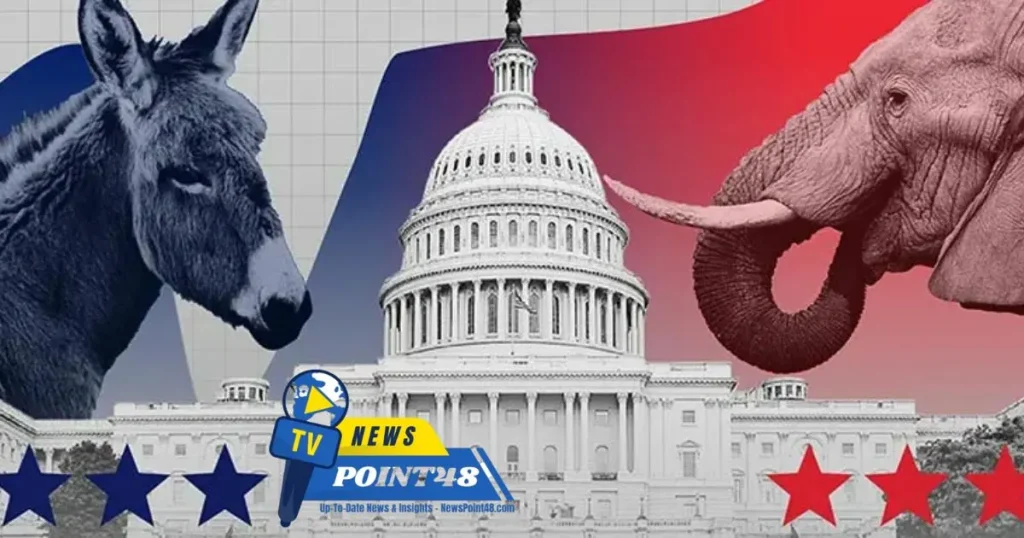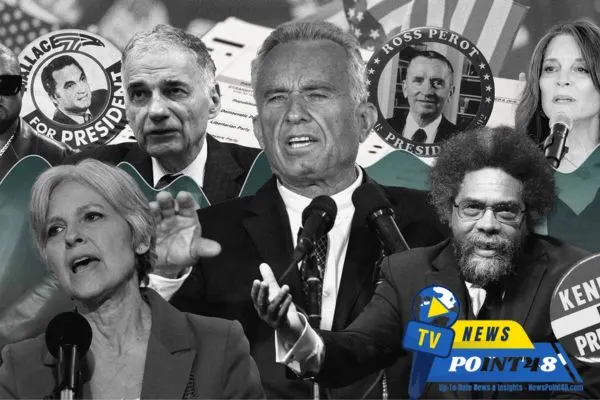
The U.S. has often been under the shadows of two major parties:Democrats and Republicans when it comes to the American political landscape. Still, the idea of a working third party has been on everyone’s mind for decades now and growing more popular lately. Older, more recent polls show a drop in support for the possibility of a third party to 58%, leaving it with just fewer than three-fifths backing and thus giving some indication as to any movement among American voters on this score… and what their mood bodes or does not about even further evolution hypothetically within the political structure.
The following blog explores the drivers of a slip in satisfaction and some broader politics on this, looking ahead to what it may mean for forthcoming elections.
The Current Context
The idea of a third political party has always gained popularity in the past when sentiments against other ideologies were high. A common critique from these groups is their frustration with the two-party system, arguing that neither party represents what much of America thinks. We have seen the emergence of independent candidates and movements — the Green Party, and the Libertarian Party. But based on the most recent data, that foundation is eroding.
And that for the same reason:support to a third party in afew months with Gallup went down from 65% to commodity at around 58%. This fall reflects a changing bias among voters and commentators ponder what might be driving it.
Why support is wavering

Polarization and Partisanship: An intensified intra-party polarization has pushed many voters to identify more strongly based on party alone. This often channels individuals back to the established parties due at least in part to the belief that a third party could split votes and allow for winning candidates along the logic of “the lesser of two evils at newspoint48.”
The barrier to viability: Even if third-party nominees have managed against all odds to jump through some ballot access hoops and take their place on the campaign trail, they frequently aren’t able to get support from donors or media exposure. It can be demoralizing for people who might support you to think that a third party is an unrealistic side that should have made a significant change.
This, combined with voter fatigue: people are tired of noticing they live in a battleground state whenever the time to vote comes near. Accordingly, most will likely rather default to the same old candidates from their two major counterparts than spend all that effort researching possible third-party applications.
Recent Elections Results: Public opinion could also be influenced by how well third-party candidates have done in past elections. So when they run and get minimal votes or no seats at all, it suggests that maybe this option is just not an alternative one more time thereby keeping people from throwing their support behind them.
Possible repercussions of reduced backing
Six other consequences would flow from this, regarding the US political scene:
Effect on Election: As the support of independent voters erodes, there may be reduced pressure upon the two primary political parties to heed their concerns. They shake up the calm waters and then leave them, even more, settled down right back to where they were — ensuring that disillusioned voters who look elsewhere are worthy of only four slam-shut doors before consigning themselves a permanent wash.
Insufficient Representation: Fewer third parties mean that America will continue to struggle with its inability to represent all ideologies. This can dampen political discourse and restrict the scope of policies available to voters.
Room for Change in Future Movements: While third-party candidates are less popular right now than they have been recently, the desire by many Americans for alternatives is still as strong or even stronger. If the Democrat or Republican parties fail to address climate change, healthcare, and economic inequality soon enough we might see a third-party movement slowly gaining momentum again.
Third-party movements can take different forms
While much of the support for third-party movements has fallen, they are out there pushing an agenda. The Green Party is generally associated with environmental concerns; the Libertarian Party is typically oriented toward personal freedoms along with minimal governmental intervention. While these parties may not command mass support, but they are critical in shaping the dialogue on important issues.
The Place of Third Parties Now?
Several factors will determine the future of third parties in this country.

New Voter Realities: Third-party alternatives may grow in popularity if as younger voters become more engaged, their values and interests could skew the demand for non-GOP/Democrat candidates. Getting those voters involved could reenergize enthusiasm and support for independent movements.
Strategic Alliances: Third parties might find strategic alliances with complementary organizations and advocacy groups valuable. Together, they could achieve greater visibility and global outreach. Save
This is known simply as Innovative Campaigning: Third-party candidates reach a much richer audience by doing things like embracing technology and social media. If the major parties fail to give grumpy voters their due, however, imaginative campaigning tactics may help party leaders reel in disenchanted constituencies and turnout head Thomas Frank’s way.
Even though the backing of a third federal political party has relapsed to 58%, many citizens have established that the high need for options remainsAnimationsModule Identifying the causes of this decline is essential for considering what lies ahead in American politics. Given that polarization impacts the design of our politics, there is a potential for some increase in third-party backing if both parties cannot accurately reflect how citizens actually look at things.
